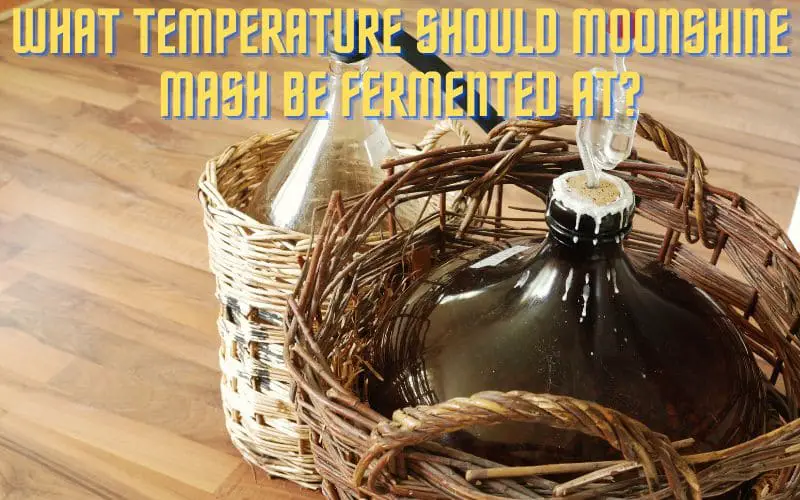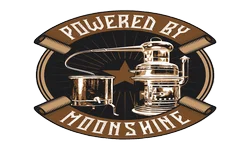Moonshine Mash Fermentation 101: Achieving the Perfect Temperature for Superior Shine

Introduction
Welcome to our journey into the world of moonshine! In this article, we’ll explore the fascinating topic of fermentation temperature for moonshine mash. Fermentation temperature plays a crucial role in the distillation process, affecting the flavor, aroma, and quality of the final moonshine product. Join us as we unravel the science and artistry behind achieving the optimal fermentation temperature for moonshine mash.
Answer to the Question
When it comes to fermenting moonshine mash, maintaining the right temperature is essential for a successful distillation process. The ideal fermentation temp helps in extracting the desired flavors from the ingredients and ensures the quality of the final product. In the following sections, we’ll delve into the key factors influencing fermentation temperature and explore the optimal temperature range for moonshine mash.
Factors Affecting Fermentation Temperature
1. Yeast Selection
The choice of yeast strain significantly impacts the fermentation temperature for moonshine mash. Different yeast strains thrive at specific temperature ranges, and selecting the appropriate strain is vital for achieving the desired fermentation outcomes.
- There is an extensive variety of yeast strains available for moonshine production, each with its unique characteristics. These may include:
- Some yeast strains are specifically designed to thrive in higher temperature environments, making them suitable for warm fermentation conditions. These strains are ideal for producing moonshine in regions with elevated ambient temperatures.
- On the contrary, there are yeast strains that excel in cooler conditions, offering the possibility of fermenting moonshine in colder climates. These strains maintain optimal performance even at lower temperatures, contributing to the versatility of moonshine production.
- When selecting a yeast strain for moonshine production, it’s essential to consider various factors:
- Understanding the temperature range in which each yeast strain operates optimally is crucial. This knowledge allows moonshine producers to adapt their fermentation process to suit their specific environmental conditions.
- Yeast strains can influence the flavor characteristics of moonshine. Some strains produce fruity, ester-rich flavors, while others contribute to a more neutral taste. By selecting specific strains, producers can tailor the flavor profile of their moonshine to meet consumer preferences.
2. Ambient Temperature
Ambient temperature, the temperature of the surrounding environment, affects the fermentation process. Fluctuations in ambient temperature can influence the rate and intensity of fermentation, making it important to control the surrounding conditions during the fermentation of moonshine mash.
3. Mash Ingredients
When it comes to mashing ingredients for moonshine production, it’s essential to consider the role of each component in the overall fermentation process. Here are some key points to note about mash ingredients:
- Grains: Different grains, such as corn, barley, and rye, can be used in moonshine mash. Each grain contributes unique flavors and characteristics to the final product, impacting the overall fermentation process.
- Enzymes: The presence of natural enzymes in certain ingredients, like malted barley, can aid in breaking down starches into fermentable sugars, providing a boost to the fermentation process.
- Nutrients: Some ingredients, such as yeast nutrients, can support the growth and activity of yeast during fermentation, ensuring a healthy and efficient fermentation process.
By understanding the properties and effects of various mash ingredients, distillers can make informed decisions to achieve the desired fermentation temperature and produce high-quality moonshine.
Optimal Fermentation Temperature
1. Importance of Optimal Temperature
Attaining the optimal fermentation temperature is crucial for ensuring the production of high-quality moonshine. It directly impacts the flavor profile, alcohol content, and overall quality of the distilled product. Maintaining the ideal temperature is fundamental for achieving the desired characteristics in moonshine.
2. Ideal Temperature Range
The ideal temperature range for fermenting moonshine mash typically falls within the range of 70-80°F (21-27°C). Within this temperature range, the yeast activity is optimized, leading to efficient fermentation and the development of desirable flavors and aromas in the moonshine mash.
3. Temperature Control Methods
Controlling the fermentation temperature is crucial for ensuring the successful fermentation of moonshine mash. There are various methods that can be employed to maintain optimal temperature conditions throughout the fermentation process. These methods include:
- Temperature-Controlled Fermenters: Using fermenters equipped with temperature control capabilities allows for precise regulation and maintenance of the fermentation temperature. This ensures that the conditions remain within the ideal range, promoting consistent and high-quality fermentation.
- Cooling Jackets: Employing cooling jackets around the fermenters helps in dissipating excess heat and maintaining stable temperatures during the fermentation process. This is particularly beneficial in environments where temperature fluctuations are common.
- Monitoring Tools: Utilizing advanced temperature monitoring tools and systems enables real-time tracking of temperature variations within the fermentation vessels. This allows for immediate adjustments to be made to ensure the temperature remains optimal for the fermentation process.
Conclusion
Exploring the intricate world of fermentation temperature for moonshine mash unveils the significance of precision, control, and artistry in the distillation process. By understanding and optimizing the fermentation temperature, distillers can craft moonshine with distinct flavors and exceptional quality, capturing the essence of tradition and innovation in every batch.
